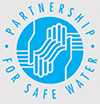AWWA providing coronavirus resources, updates
AWWA has created a resource page to assist water utilities in addressing the coronavirus (COVID-19) situation. As the scope of the outbreak becomes clearer, utilities should be assessing workforce and supply chain contingency plans. Many have likely been doing so already in preparation for compliance with Section 2013 of America’s Water Infrastructure Act, enacted in October 2018. That section calls for risk and resilience assessment and associated emergency response plans.
The first and best source of authoritative information on COVID-19 is the U.S. Centers for Disease Control and Prevention website, where visitors can find information on the virus itself, situation updates, travel notices and tailored information for audiences including communities, schools and businesses and others. The World Health Organization issued its own technical guidance on COVID-19, which includes a March 3 technical brief on water, sanitation, hygiene and waste management.
The Cybersecurity and Infrastructure Security Agency (CISA) of the U.S. Department of Homeland Security has been taking part in interagency and industry coordination calls, and working with critical infrastructure partners to prepare for possible disruptions to critical infrastructure, should the virus take a stronger hold in the United States. CISA is expected to issue new guidance on pandemic planning within the next few days.
AWWA has created a resource webpage for information on Coronavirus. Please feel free to distribute the link to your members, colleagues and concerned citizens – www.awwa.org/Coronavirus
Coronavirus (COVID-19)
AWWA has created a resource webpage for information on Coronavirus. Please feel free to distribute the link to your members, colleagues and concerned citizens – www.awwa.org/Coronavirus
PA Dept of Health Live Updates
Pennsylvania Department of Health, PAcast, Live Updates
President Donald J. Trump Approves Pennsylvania Disaster Declaration
President Trump Declares Pennsylvania in a State of Emergency
Centers for Disease Control & Prevention (CDC) Covid-19 Information
Center for Disease Control (CDC), Coronavirus (COVID-19)
John Hopkins Realtime Covid-19 Live Map
Johns Hopkins Realtime COVID-19 Statistics Global Cases by state and Nation
Covid vs. US Daily Average Cause of Death
Realtime comparative average deaths per day (watch to the end)
Coronavirus (COVID-19)
COVID-19 and Additional Resources
AWWA Covid-19 Webinars
American Water Works Association (AWWA), COVID-19 Webinars
PA AWWA Covid-19 Updates
Pennsylvania American Water Works Association (PA-AWWA) – COVID-19 News Updates
OSHA Covid-19 Overview
Occupational Safety and Health Administration (OSHA), COVID-19
PA Department of Health: Covid-19 Overview
Pennsylvania Department of Health, Coronavirus (COVID-19) Pennsylvania Overview
Commonwealth of PA: Covid-19 Updates
Pennsylvania Government, Responding to COVID-19 in Pennsylvania
DCED: A Collection of Covid-19 Resources
Pennsylvania Government, COVID-19 Resources for Businesses, Communities, and Local Governments
Office of Unemployment Compensation: Information for Pennsylvania Employees Impacted by Covid-19
Pennsylvania Unemployment Compensation for Employees Impacted by COVID-19
US Department of Labor: Families First Coronavirus Response Act Questions & Answers
United States Department of Labor, Families First Coronavirus Response Act: Questions and Answers
Water Environment Federation (WEF): Water Professional Guide to Covid-19
Water Environment Federation (WEF), Water Professional Guide to COVID-19
Water Environment Federation (WEF): Current Priority: Coronavirus
Water Environment Federation (WEF), Current Priority: Coronavirus
World Health Organization (WHO): Covid-19 Technical Guidance
World Health Organization (WHO), COVID-19 Technical Guidance
US Senator Bob Casey Coronavirus Resources for Pennsylvanians
COVID-19 | Coronavirus Resources for Pennsylvanians
PMAA: Guidance to Municipal Authorities During Covid-19 Pandemic
Pennsylvania Municipal Authorities Association (PMAA), Guidance During COVID-19
Center for Disease Control: Water Transmission and Covid-19 FAQ’s
Center for Disease Control (CDC), Water Transmission and COVID-19
Environmental Protection Agency: Coronavirus and Drinking Water & Wastewater
EPA, Coronavirus and Drinking Water and Wastewater
PA DEP Operator Certification Deadline Extensions Available
PA DEP Operator Certification Request for Cycle Extension
PA DEP Safe Drinking Water COVID-19 Information
PA DEP Safe Drinking Water COVID-19 Information
Pennsylvania Water Systems Not the Cause of Lead Exposure
An analysis of public water systems in Pennsylvania cities with high lead exposure rates shows that drinking water is not the source of the lead. Out of the more than 150 public water systems reviewed by the Pennsylvania Department of Environmental Protection (DEP) none had exceeded EPA standards for lead in the drinking water. The water systems tested serve more than 6 million people – nearly half of the residents of the state.
“We can definitively say that none of these 159 water systems have exceeded EPA action levels for lead. This eliminates one of the possible sources for the exposure,” said DEP Secretary John Quigley. “DEP has regulations and programs in place to monitor lead levels in drinking water, and they are working.”
According to Department of Health, the primary source of childhood lead poisoning in Pennsylvania continues to be exposure to aging, deteriorating lead-based paint (chips and dust), and not drinking water. The age of Pennsylvania’s housing stock contributes to this problem. While lead was banned from paint in 1978, many older dwellings still contain layers of pre-1978 paint. According to 2010 Census data, Pennsylvania ranks third in the nation for having the most housing units identified as having been built before 1950 (when lead was more prevalent) and fourth in the nation for housing units identified as having been built before 1978, according to a 2014 Department of Health report.
Public water systems must regularly sample water from the homes they serve. These tests target homes known to have lead pipes, lead solder, or lead service lines. The EPA action level for lead is 15 parts per billion (ppb) or 0.015 milligrams per liter. If 90% of tested homes are below the 15 ppb action level, a water system is considered safe.
Pennsylvania residents on public water systems can see the results of the most recent testing by visiting DEP’s Consumer Confidence Report and searching by their water system name or by the county they live in (on the results page, contaminant 1022 is copper, 1030 is lead).
Pennsylvania residents are encouraged to visit www.dep.pa.gov/lead for more information on lead in drinking water.
The Department of Health provides a toll-free Lead Information Line (1-800-440-LEAD) to respond to caller questions and provide electronic materials about lead poisoning and other environmental hazards. For more information, please also visit the Healthy Homes and Lead Poisoning Prevention FAQ.
Source: DEP Press Release, 2/8/2016
AWWA’s Lead Resource Community Page
http://www.awwa.org/resources-tools/water-knowledge/lead.aspx
U.S. EPA: Learn about Lead
U.S. EPA: Basic Information about Lead in Drinking Water
PA DEP’s Lead in Drinking Water Page
DrinkTap.org
http://www.drinktap.org/water-info/whats-in-my-water/lead-in-water.aspx
AWWA Fluoridation of Public Water Supplies: https://www.awwa.org/Policy-Advocacy/AWWA-Policy-Statements/Fluoridation-of-Public-Water-Supplies
PFAS
National Strategy to Confront PFAS Announced
- Finalizing the Fifth Unregulated Contaminant Monitoring Rule this year requiring monitoring for 29 PFAS.
- Issuing final health advisories for Perfluorobutane sulfonic acid (PFBS) and GenX in the Spring of 2022.
- Proposing and then finalizing enforceable drinking water limits under the Safe Drinking Water Act for Perfluorooctanoic acid (PFOA) and Perfluorooctane sulfonic acid (PFOS) in the Fall of 2023.
- Finalizing a rulemaking designating PFOA and PFOS as hazardous substances under CERCLA by Summer 2023.
- Issuing updated guidance for destroying and disposing of PFAS and PFAS-containing materials by December 2023 or perhaps as early as the Fall of 2023.
- Publishing final multi-laboratory validated analytical method for Clean Water Act applications in Winter 2022 and make additional updates to drinking water analytical methods for PFAS by Fall 2024.
- Issuing new guidance recommending state-issued permits that do not already include monitoring requirements for PFAS use EPA’s recently published analytical method 1633 by Winter 2022.
- Completing the risk assessment for PFOA and PFOS in biosolids by Winter 2024.
- Completing draft PFHxS, PFHxA, PFNA, and PFDA IRIS assessments for public comment and peer review (Spring – Fall 2022), while finalizing the PFBA risk assessment in Fall 2022.
DEP’s PFAS webpage
For more visit: www.epa.gov/pfas
EPA’s PFAS Action Plan
AWWA’s PFAS information page
Water Operators Tutor
A free service to help water operations professionals with technical questions
I started the Water Operators Tutor web blog to help drinking water professionals get answers to their technical questions. Learning to solve problems that may be on water treatment and distribution system certification exams is one objective. Another goal is to provide technical information for operations personnel so that they can investigate problems and develop strategies to improve water service.
I have been a water professional for more than 35 years and have written or edited more than 22 books and scores of articles on various water supply topics. Now that I am retired I want to share some of what I have learned so that others in the profession can benefit. It has been my privilege over the years to work with many dedicated water service providers. I will be calling on these friends to provide content for the blog and to help answer questions. This professional team will provide free information in the spirit of water service providers everywhere.
AWWA Sections are the primary contact with operational personnel. The AWWA Sections provide education and training at a reasonable cost. The Water Operators Tutor blog is another service provided through AWWA Sections to add value to membership. The blog will add technology over time to capture tutorial sessions on video, voice, and text for the benefit of all the readers. Use the Water Operators Tutor to ask your technical questions and to learn from the answers given to other’s questions.
Start your participation today by visiting the blog and sending a question or comment.
I hope to hear from you soon.
Bill Lauer
http://www.wateroperatorstutor.blogspot.com




 Click Here to Read »
Click Here to Read » 


____________________
PA Emergency Management Agency recently launched Keystone Mesonet, an internet-based one-stop shop for weather and environmental data. The website provides users with all PA and federally owned weather data in one location.
Visit keystone-mesonet.org and learn more: http://bit.ly/3csl9NP
____________________